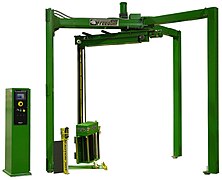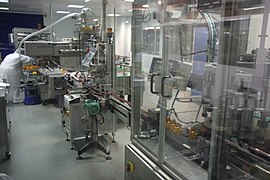Packaging
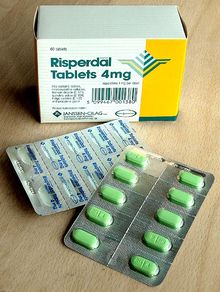
Packaging is the science, art and technology of enclosing or protecting products for distribution, storage, sale, and use. Packaging also refers to the process of designing, evaluating, and producing packages. Packaging can be described as a coordinated system of preparing goods for transport, warehousing, logistics, sale, and end use. Packaging contains, protects, preserves, transports, informs, and sells.[1] In many countries it is fully integrated into government, business, institutional, industrial, and for personal use.
Package labeling (American English) or labelling (British English) is any written, electronic, or graphic communication on the package or on a separate but associated label. Many countries or regions have regulations governing the content of package labels. Merchandising, branding, and persuasive graphics are not covered in this article.
History of packaging
Ancient era

The first packages used the natural materials available at the time: baskets of reeds, wineskins (bota bags), wooden boxes, pottery vases, ceramic amphorae, wooden barrels, woven bags, etc. Processed materials were used to form packages as they were developed: first glass and bronze vessels. The study of old packages is an essential aspect of archaeology.
The first usage of paper for packaging was sheets of treated mulberry bark used by the Chinese to wrap foods as early as the first or second century BC.[2]
The usage of paper-like material in Europe was when the Romans used low grade and recycled papyrus for the packaging of incense.[3]
The earliest recorded use of paper for packaging dates back to 1035, when a
Modern era
Tinplate
The use of tinplate for packaging dates back to the 18th century. The manufacturing of tinplate was the monopoly of Bohemia for a long time; in 1667 Andrew Yarranton, an English engineer, and Ambrose Crowley brought the method to England where it was improved by ironmasters including Philip Foley.[4][5] By 1697, John Hanbury[6] had a rolling mill at Pontypool for making "Pontypoole Plates".[7][8] The method pioneered there of rolling iron plates by means of cylinders enabled more uniform black plates to be produced than was possible with the former practice of hammering.
Tinplate boxes first began to be sold from ports in the
Canning
With the discovery of the importance of airtight containers for
The progressive improvement in canning stimulated the 1855 invention of the can opener. Robert Yeates, a cutlery and surgical instrument maker of Trafalgar Place West, Hackney Road, Middlesex, UK, devised a claw-ended can opener with a hand-operated tool that haggled its way around the top of metal cans.[12] In 1858, another lever-type opener of a more complex shape was patented in the United States by Ezra Warner of Waterbury, Connecticut.
Paper-based packaging

Set-up boxes were first used in the 16th century and modern
Commercial paper bags were first manufactured in Bristol, England, in 1844, and the American Francis Wolle patented a machine for automated bag-making in 1852.
20th century
Packaging advancements in the early 20th century included Bakelite closures on bottles, transparent cellophane overwraps and panels on cartons. These innovations increased processing efficiency and improved food safety. As additional materials such as aluminum and several types of plastic were developed, they were incorporated into packages to improve performance and functionality.[14]

In 1952,
In-plant recycling has long been typical for producing packaging materials. Post-consumer recycling of aluminum and paper-based products has been economical for many years: since the 1980s, post-consumer recycling has increased due to

Many prominent innovations in the packaging industry were developed first for military use. Some military supplies are packaged in the same commercial packaging used for general industry. Other military packaging must transport
As of 2003[update], the packaging sector accounted for about two percent of the
The purposes of packaging and package labels
Packaging and package labeling have several objectives[18]
- Physical protection – The objects enclosed in the package may require protection from, among other things, mechanical shock, vibration, electrostatic discharge, compression, temperature,[19] etc.
- Barrier protection – A barrier to oxygen absorbers to help extend shelf life. Modified atmospheres[20] or controlled atmospheres are also maintained in some food packages. Keeping the contents clean, fresh, sterile[21] and safe for the duration of the intended shelf lifeis a primary function. A barrier is also implemented in cases where segregation of two materials prior to end use is required, as in the case of special paints, glues, medical fluids, etc.
- Containment or agglomeration – Small objects are typically grouped together in one package for reasons of storage and selling efficiency. For example, a single box of 1000 marbles requires less physical handling than 1000 single marbles. powders, and granular materialsneed containment.
- Information transmission – Packages and labels communicate how to use, transport, recycle, or dispose of the package or product. With pharmaceuticals, food, medical, and chemical products, some types of information are required by government legislation. Some packages and labels also are used for track and trace purposes. Most items include their serial and lot numbers on the packaging, and in the case of food products, medicine, and some chemicals the packaging often contains an expiry/best-before date, usually in a shorthand form. Packages may indicate their construction material with a symbol.
- Marketing – Packaging and labels can be used by marketers to encourage potential buyers to purchase a product. Package graphic design and physical design have been important and constantly evolving phenomena for several decades. Marketing communications and graphic design are applied to the surface of the package and often to the point of sale display. Most packaging is designed to reflect the brand's message and identity on the one hand while highlighting the respective product concept on the other hand.


- Security – Packaging can play an important role in reducing the Counterfeit consumer goods, unauthorized sales (diversion), material substitution and tampering can all be minimized or prevented with such anti-counterfeiting technologies. Packages may include authentication seals and use security printing to help indicate that the package and contents are not counterfeit. Packages also can include anti-theft devices such as dye-packs, RFID tags, or electronic article surveillance[23] tags that can be activated or detected by devices at exit points and require specialized tools to deactivate. Using packaging in this way is a means of retail loss prevention.
- Convenience – Packages can have features that add disposal
- Portion control – Single serving or single dosage packaging has a precise amount of contents to control usage. Bulk commodities (such as salt) can be divided into packages that are a more suitable size for individual households. It also aids the control of inventory: selling sealed one-liter bottles of milk, rather than having people bring their own bottles to fill themselves.
- Branding/Positioning – Packaging and labels are increasingly used to go beyond marketing to brand positioning, with the materials used and design chosen key to the storytelling element of brand development. Due to the increasingly fragmented media landscape in the digital age this aspect of packaging is of growing importance.
Packaging types

Packaging may be of several different types. For example, a transport package or distribution package can be the shipping container used to ship, store, and handle the product or inner packages. Some identify a consumer package as one which is directed toward a consumer or household.
Packaging may be described in relation to the type of product being packaged: medical device packaging, bulk chemical packaging, over-the-counter drug packaging, retail food packaging, military materiel packaging, pharmaceutical packaging, etc.
It is sometimes convenient to categorize packages by layer or function: primary, secondary, etc.
- Primary packaging is the material that first envelops the product and holds it. This usually is the smallest unit of distribution or use and is the package which is in direct contact with the contents.
- Secondary packaging is outside the primary packaging, and may be used to prevent pilferage or to group primary packages together.
- Tertiary or transit packaging is used for bulk handling, warehouse storage and transport shipping. The most common form is a palletized unit load that packs tightly into containers.
These broad categories can be somewhat arbitrary. For example, depending on the use, a shrink wrap can be primary packaging when applied directly to the product, secondary packaging when used to combine smaller packages, or tertiary packaging when used to facilitate some types of distribution, such as to affix a number of cartons on a pallet.
Packaging can also have categories based on the package form. For example, thermoform packaging and flexible packaging describe broad usage areas.
Labels and symbols used on packages
Many types of symbols for package labeling are nationally and internationally standardized. For consumer packaging, symbols exist for product certifications (such as the
The labelling of
Consumer package contents
Several aspects of consumer package labeling are subject to regulation. One of the most important is to accurately state the quantity (weight, volume, count) of the package contents. Consumers expect that the label accurately reflects the actual contents. Manufacturers and packagers must have effective quality assurance procedures and accurate equipment; even so, there is inherent variability in all processes.
Regulations attempt to handle both sides of this. In the US, the
Other regions and countries have their own regulatory requirements. For example, the UK has its Weights and Measures (Packaged Goods) Regulations.
Shipping container labeling
Technologies related to shipping containers are identification codes,
Elements of these core technologies include
Small parcel carriers often have their own formats. For example, United Parcel Service has a MaxiCode 2-D code for parcel tracking.
Shipments of hazardous materials or dangerous goods have special information and symbols (labels, placards, etc.) as required by UN, country, and specific carrier requirements. On transport packages, standardized symbols are also used to communicate handling needs. Some are defined in the ASTM D5445 "Standard Practice for Pictorial Markings for Handling of Goods" and ISO 780 "Pictorial marking for handling of goods".
-
Flammable liquid
-
Explosives
-
This way up
-
Fragile material
-
Keep away from water
Package development considerations
Package design and development are often thought of as an integral part of the new product development process. Alternatively, the development of a package (or component) can be a separate process but must be linked closely with the product to be packaged. Package design starts with the identification of all the requirements: structural design, marketing, shelf life, quality assurance, logistics, legal, regulatory, graphic design, end-use, environmental, etc. The design criteria, performance (specified by package testing), completion time targets, resources, and cost constraints need to be established and agreed upon. Package design processes often employ rapid prototyping, computer-aided design, computer-aided manufacturing and document automation.

An example of how package design is affected by other factors is its relationship to logistics. When the distribution system includes individual shipments by a small parcel carrier, the sorting, handling, and mixed stacking make severe demands on the strength and protective ability of the transport package. If the logistics system consists of uniform palletized unit loads, the structural design of the package can be designed to meet those specific needs, such as vertical stacking for a longer time frame. A package designed for one mode of shipment may not be suited to another.
With some types of products, the design process involves detailed regulatory requirements for the packaging. For example, any package components that may contact foods are designated food contact materials.[28]
Sometimes the objectives of package development seem contradictory. For example, regulations for an
The intended consumer, however, might be disabled or elderly and unable to readily open the package. Meeting all goals is a challenge.Package design may take place within a company or with various degrees of external
Environmental considerations
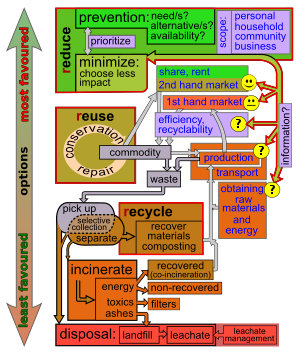
Package development involves considerations of
which considers the material and energy inputs and outputs to the package, the packaged product (contents), the packaging process, the logistics system,[33] waste management, etc. It is necessary to know the relevant regulatory requirements for point of manufacture, sale, and use.The traditional "three R's" of reduce, reuse, and recycle are part of a waste hierarchy which may be considered in product and package development.
- Prevention – Waste preventionis a primary goal. Packaging should be used only where needed. Proper packaging can also help prevent waste. Packaging plays an important part in preventing loss or damage to the packaged product (contents). Usually, the energy content and material usage of the product being packaged are much greater than that of the package. A vital function of the package is to protect the product for its intended use: if the product is damaged or degraded, its entire energy and material content may be lost.
- Minimization (also "source reduction") – Eliminate overpackaging. The mass and volume of packaging (per unit of contents) can be measured and used as criteria for minimizing the package in the design process. Usually "reduced" packaging also helps minimize costs. Packaging engineers continue to work toward reduced packaging.[34]
- Reuse – Reusable packaging is encouraged.[35] Returnable packaging has long been useful (and economically viable) for closed-loop logistics systems. Inspection, cleaning, repair, and recouperage are often needed. Some manufacturers re-use the packaging of the incoming parts for a product, either as packaging for the outgoing product[36] or as part of the product itself.[37]
- Recycling – Recycling is the reprocessing of materials (pre- and post-consumer) into new products. Emphasis is focused on recycling the largest primary components of a package: steel, aluminum, papers, plastics, etc. Small components can be chosen which are not difficult to separate and do not contaminate recycling operations. Packages can sometimes be designed to separate components to better facilitate recycling.
- Energy recovery – Waste-to-energy and refuse-derived fuel in approved facilities make use of the heat available from incinerating the packaging components.
- Disposal – Incineration, and placement in a sanitary landfill are undertaken for some materials. Certain US states regulate packages for toxic contents, which have the potential to contaminate emissions and ash from incineration and leachate from landfill. Packages should not be littered.
Development of sustainable packaging is an area of considerable interest to standards organizations, governments, consumers, packagers, and retailers.
Sustainability is the fastest-growing driver for packaging development, particularly for packaging manufacturers that work with the world's leading brands, as their CSR (Corporate Social Responsibility) targets often exceed those of the EU Directive.
Packaging machinery
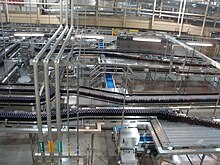
Choosing packaging machinery includes an assessment of technical capabilities, labor requirements, worker safety, maintainability, serviceability, reliability, ability to integrate into the packaging line, capital cost, floorspace, flexibility (change-over, materials, multiple products, etc.), energy requirements, quality of outgoing packages, qualifications (for food, pharmaceuticals, etc.), throughput, efficiency, productivity, ergonomics, return on investment, etc.
Packaging machinery can be:
- purchased as standard, off-the-shelf equipment
- purchased custom-made or custom-tailored to specific operations
- manufactured or modified by in-house engineers and maintenance staff
Efforts at packaging line automation increasingly use programmable logic controllers and robotics.
Packaging machines may be of the following general types:
- Accumulating and collating machines
- Blister packs, skin packs and vacuum packaging machines
- Bottle caps equipment, over-capping, lidding, closing, seaming and sealing machines
- Box, case, tray, and carrier forming, packing, unpacking, closing, and sealing machines
- Cartoning machines
- Cleaning, sterilizing, cooling and drying machines
- Coding, printing, marking, stamping, and imprinting machines
- Convertingmachines
- Conveyor belts, accumulating and related machines
- Feeding, orienting, placing and related machines
- Filling machines: handling dry, powdered, solid, liquid, gas, or viscous products
- Inspecting: visual, sound, metal detecting, etc.
- Label dispenser
- Orienting, unscrambling machines
- Package filling and closing machines
- Palletizing, depalletizing, unit load assembly
- Product identification: labeling, marking, etc.
- Sealing machines: heat sealer or glue units
- Slitting machines
- Weighing machines: check weigher, multihead weigher
- Wrapping machines: stretch wrapping, shrink wrap, banding
- Form, fill and seal machines
- Other specialty machinery: perforating, lasercutters, parts attachment, etc.
-
Bakery goodsheat tunnel on roller conveyor
-
High speed conveyor with stationarybar code scannerfor sorting
-
corrugated box.
-
Robots used to palletize bread
-
Automatic stretch wrapping machine
-
A semi-automaticrotary arm stretch wrapper
-
Equipment for thermoforming packages at NASA
-
Automated labeling line for wine bottles
-
Shrink film wrap being applied on PET bottles
-
Pharmaceutical packaging line
-
Filling machinery for bag-in-box
See also
- Brazilian packaging market
- Document automation
- In-mould labelling
- Packing problems
- Package cushioning
- Polypropylene raffia
- Resealable packaging
- Gift wrapping
- Zero-waste lifestyle
References
- ISBN 1-930268-25-4
- ^ Paula, Hook (May 11, 2017). "A History of Packaging". Ohio State University. Retrieved December 29, 2020.
- ^ a b Diana Twede (2005). "The Origins of Paper Based Packaging" (PDF). Conference on Historical Analysis & Research in Marketing Proceedings. 12: 288–300 [289]. Archived from the original (PDF) on July 16, 2011. Retrieved March 20, 2010.
- ^ Brown, P.J. (1988), "Andrew Yarranton and the British tinplate industry", Historical Metallurgy, vol. 22, no. 1, pp. 42–48
- ^ King, P.W. (1988), "Wolverley Lower Mill and the beginnings of the tinplate industry", Historical Metallurgy, vol. 22, no. 2, pp. 104–113
- ^ King 1988, p. 109
- ^ H.R. Schubert, History of the British iron and steel industry ... to 1775, 429.
- ^ Minchinton, W.W. (1957), The British tinplate industry: a history, Clarendon Press, Oxford, p. 10
- ^ Data extracted from D.P. Hussey et al., Gloucester Port Books Database (CD-ROM, University of Wolverhampton 1995).
- ^ Geoghegan, Tom (April 21, 2013). "BBC News - The story of how the tin can nearly wasn't". Bbc.co.uk. Retrieved June 4, 2013.
- ISBN 978-0-7146-1284-3.
- ISBN 978-1-57958-380-4.
- ISBN 978-1-932078-42-8.
- ISBN 978-0-471-06397-1.
- ^ "Michigan State School of Packaging". Michigan State University. Retrieved February 11, 2012.
- ^ Maloney, J.C. (July 2003). "The History and Significance of Military Packaging" (PDF). Defence Packaging Policy Group. Defence Logistics Agency.
- ISBN 978-1-4051-8298-0.
- ^ Bix, L; Rifon; Lockhart; de la Fuente (2003). The Packaging Matrix: Linking Package Design Criteria to the Marketing Mix. IDS Packaging. Retrieved September 16, 2017.
- S2CID 136558384.
- S2CID 98181751.
- .
- .
- ^ How Anti-shoplifting Devices Work”, HowStuffWorks.com
- ^ "Checking the Net Contents of Packaged Goods, Handbook 133 - 2020", Nist, US National Institute of Science and Technology, 2020, retrieved April 8, 2020
- ^ Hines, A (February 18, 2019). "WEIGHING YOUR OPTIONS WITH NIST HANDBOOK 133". Food Safety Net Services News. Retrieved April 8, 2020.
- ^ The Weights and Measures (Packaged Goods) Regulations 2006, UK Statutory Instruments, 2006 No. 659, 2006, retrieved April 8, 2020
- ^ Bacheldor, Beth (January 11, 2008). "Sam's Club Tells Suppliers to Tag or Pay". Retrieved January 17, 2008.
- ^ Sotomayor, Rene E.; Arvidson, Kirk; Mayer, Julie; McDougal, Andrew; Sheu, Chingju (2007). "Regulatory Report, Assessing the Safety of Food Contact Substances". Food Safety. Archived from the original on August 26, 2009.
- PMID 8637140.
- S2CID 110144652.
- .
- ^ Franklin (April 2004). "Life Cycle Inventory of Packaging Options for Shipment of Retail Mail-Order Soft Goods" (PDF). Archived from the original (PDF) on December 17, 2008. Retrieved December 13, 2008.
- ^ "SmartWay Transport Partnerships" (PDF). US Environmental Protection Agency. Retrieved December 22, 2008.
- ^ DeRusha, Jason (July 16, 2007). "The Incredible Shrinking Package". WCCO. Archived from the original on July 17, 2007. Retrieved July 16, 2007.
- ^ Use Reusables: Fundamentals of Reusable Transport Packaging (PDF), US Environmental Protection Agency, 2012, archived from the original (PDF) on January 14, 2015, retrieved June 30, 2014
- ^ "HP DeskJet 1200C Printer Architecture". (PDF). Retrieved on June 27, 2012.
- ^ "Footprints In The Sand" Archived August 26, 2010, at the Wayback Machine. Newsroom-magazine.com. Retrieved on June 27, 2012.
- ^ Wood, Marcia (April 2002). "Leftover Straw Gets New Life". Agricultural Research.
Further reading
- Calver, G., What Is Packaging Design, Rotovision. 2004, ISBN 2-88046-618-0.
- Dean, D.A., 'Pharmaceutical Packaging Technology", 2000, ISBN 0-7484-0440-6
- Meisner, "Transport Packaging", Third Edition, IoPP, 2016
- Morris, S.A., "Food and Package Engineering", 2011, ISBN 978-0-8138-1479-7
- Pilchik, R., "Validating Medical Packaging" 2002, ISBN 1-56676-807-1
- Robertson, G.L., "Food Packaging: Principles and Practice", 3rd edition, 2013, ISBN 978-1-4398-6241-4
- Selke, S., "Plastics Packaging", 2004, ISBN 1-56990-372-7
- Tweede, Selke, Cartons, Crates And Corrugated Board: Handbook of Paper And Wood Packaging Technology, Destech Pub ,2014, 2nd edition,
External links
 Media related to Packaging at Wikimedia Commons
Media related to Packaging at Wikimedia Commons

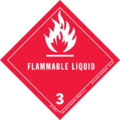





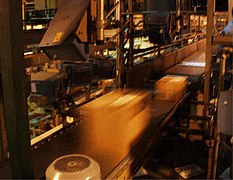
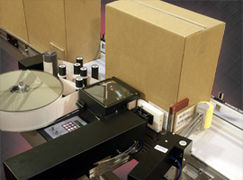
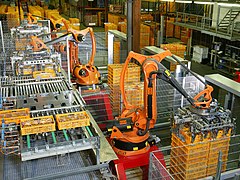

![Equipment used for making molded pulp components and molding packaging from straw[38]](http://upload.wikimedia.org/wikipedia/commons/thumb/2/27/Molding_packaging_from_straw%2C_k9837-1.jpg/276px-Molding_packaging_from_straw%2C_k9837-1.jpg)
